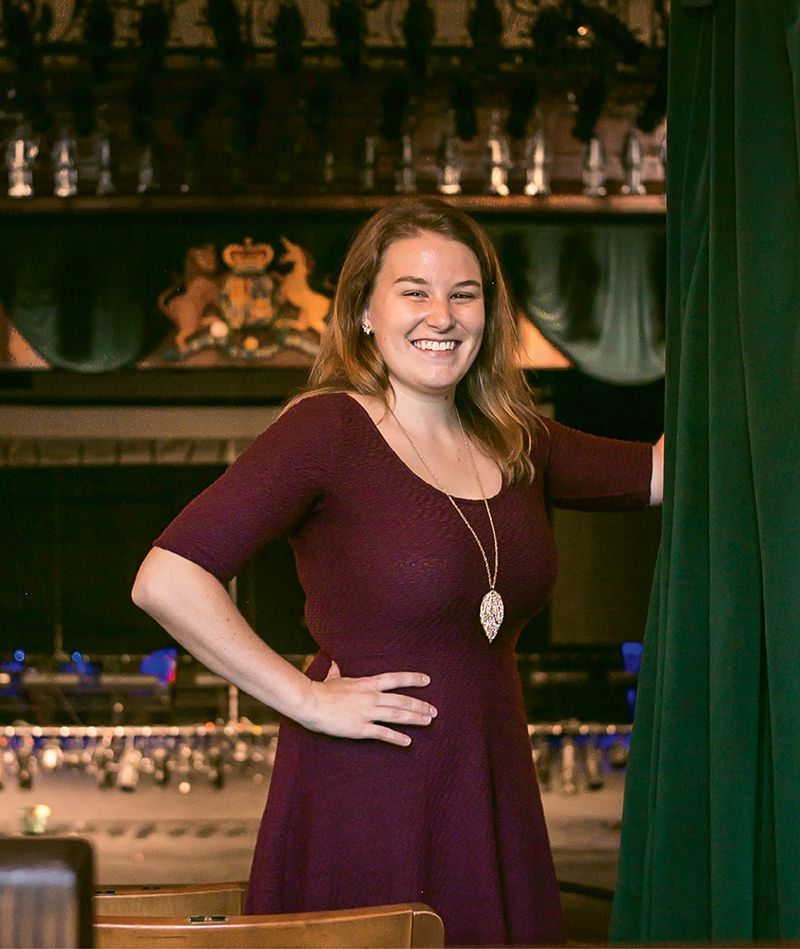Charleston Stage set designer Nicole Bianco brings stories to life with her three-dimensional creations

Nicole Bianco works as Charleston Stage‘s set designer and also teaches basic carpentry classes to high school students through the company‘s Wings program.
Standing center stage in a community theater at age 14—braces sparkling under the bright lights and chest taped to prevent the audience from realizing the little boy in Seussical the Musical was actually a girl—Nicole Bianco knew theater would always be part of her life. While growing up in Kissimmee, Florida, she often acted in local productions but didn’t find her niche until attending Rollins College, where she double majored in chemistry and musical theater. Her theater professor suggested set design classes, and though she protested due to a lack of drawing ability, she quickly discovered her knack for it. Having stepped in a year ago as Charleston Stage’s solo set designer, she just completed her latest project, The Little Mermaid, which runs at Dock Street Theatre through September 24.
College days: My classes weren’t straightforward. It was more about learning your own style, finding what’s important to you in each show. During undergrad, I came to view the set as another character—an important one that deserves to be there.
First gig: I worked as a set design intern for PCPA Theaterfest in California for about a year before returning home. Then, I received a masters from University of Florida and met Julian Wiles from Charleston Stage three years later at a conference.

This model crafted by Bianco for The Little Mermaid helps the crew envision the show‘s logistics.
Setting the scene: The set should be able to speak for itself in a language that’s purely three-dimensional. Creating a consistent aesthetic and invoking a particular feeling from the audience helps immerse viewers in the environment.
Getting started: I begin with keywords that interest me—“ocean” and “kelp” were a couple that came to mind for The Little Mermaid. Googling “oceans” yields a million results, but I determined what would make our ocean look fun on stage, like bubbles. To find inspiration for a show, I dive deeper and deeper down the Internet rabbit hole.
Bringing it to fruition: I design everything, and my team—technical director, prop master, master carpenter, and carpenter—constructs it all, then I paint. I prefer to create models before producing the actual set because it helps everyone understand how actors and set pieces will move around the stage.
The Little Mermaid: We’ve created a fantastic language for the under-sea scenes with funky colors and acrylic light-up bubbles. It’s not just painted with blues and greens, but pinks and purples, too. Incorporating a full range of colors allows lighting to play with and change how the audience sees scenery on stage.
Outside the shop: I’m always building stuff at home. Recently, I made a drafting table, but my big thing is upholstery. I started doing it for theater, but now I do it in my free time.